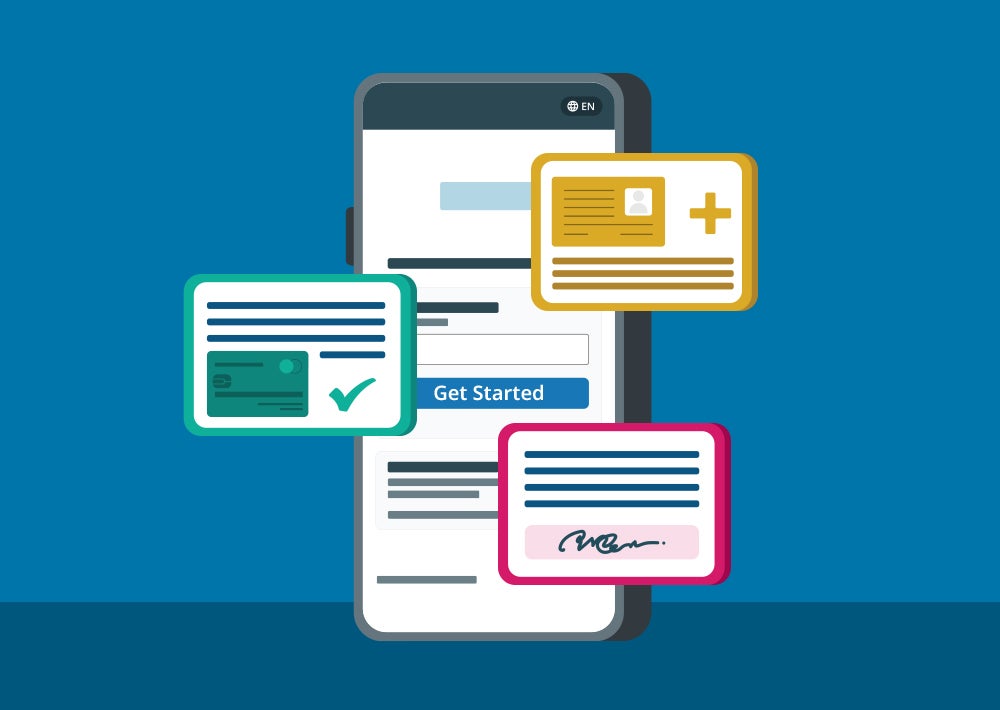Q&A with Kristen Ballantine, VP, Public Affairs
Healthcare organizations are no strangers to policy changes, and the recent passage of the One Big Beautiful Bill Act (OBBBA) is no different. Although this landmark legislation introduces significant shifts to Medicaid eligibility and administration, one thing hasn’t changed: Phreesia’s commitment to helping healthcare teams manage transitions and deliver high-quality care.
Kristen Ballantine, Phreesia’s VP of Public Affairs, shares what healthcare teams need to know about OBBBA, including what to expect, how to prepare and how Phreesia’s longstanding track record makes us a trusted partner for organizations adapting to this new landscape.
Q: What is the One Big Beautiful Bill Act (OBBBA)?
Kristen Ballantine: The One Big Beautiful Bill Act (OBBBA) was signed into law in July 2025 and brings notable changes to Medicaid eligibility, coverage requirements and administrative procedures. The law introduces stricter eligibility criteria, new documentation requirements and shorter coverage windows for retroactive care.
Healthcare organizations, especially community health centers (CHCs) and rural hospitals, will play a critical role in helping patients understand, meet and maintain compliance with these new standards. Their ability to communicate clearly, gather accurate patient data and support periodic eligibility checks will be critical in minimizing coverage loss and care disruptions.
Q: How will OBBBA impact patients and healthcare organizations?
Ballantine: The Congressional Budget Office (CBO) projects that OBBBA will increase the number of uninsured Americans by about 10 million by 2034. These projections stem from tighter Medicaid eligibility criteria, newly mandated work requirements, shorter intervals between eligibility checks and reduced retroactive coverage.
Without a doubt, these changes will create confusion among patients and put additional administrative demands on healthcare teams. Patients may struggle to understand what’s required to keep their coverage—sometimes not realizing they’ve lost it until they seek care. For healthcare organizations, especially CHCs and rural hospitals, this means more uncompensated care, heavier front-office workloads and more demand to support patients through complex eligibility processes.
Organizations will need clear, streamlined processes to help patients maintain coverage and access necessary care, including tools to verify eligibility, educate patients and guide them through documentation requirements.
Q: How will OBBBA affect Community Health Centers (CHCs), and what is the Rural Health Transformation Program?
Ballantine: CHCs care for many Medicaid and uninsured patients, so OBBBA’s new eligibility checks, work requirements and coverage restrictions will have a big impact. These changes could lead to more uncompensated care and added administrative work, especially in states with large immigrant populations.
To help address these challenges, CHCs are eligible for the $50 billion, five-year Rural Health Transformation Program. States can use the funding for priorities like improving patient outcomes, health IT adoption, recruiting rural clinicians, enhancing cybersecurity and expanding access to opioid use disorder treatment and other designated uses. States must submit their plans by December 31, 2025, so CHCs should start working with Medicaid agencies now to ensure their needs are included.
Phreesia can play a strategic role by helping CHCs capture accurate patient demographic data, educate patients on eligibility requirements and track key metrics tied to program objectives—positioning them to both comply with OBBBA and leverage Rural Health Transformation dollars effectively.
Q: What specific changes should healthcare organizations be aware of right now?
Ballantine: Healthcare teams should pay attention to several key upcoming changes:
- More frequent eligibility checks: Starting in 2027, Medicaid eligibility verification will occur every six months for the expansion population instead of annually, doubling the administrative load for both patients and providers.
- Work requirements: Adults covered by Medicaid expansion will need to demonstrate a minimum of 80 hours per month of employment, volunteer work or education or earn less than $580 per month to retain coverage. There are some exclusions (e.g., pregnant people, medically frail, etc.) but this applies to a good portion of enrollees.
- Data verification: Organizations will be required to collect accurate, up-to-date patient addresses and Social Security numbers, as states will use federal databases to verify eligibility.
- Reduced retroactive coverage: Medicaid will offer only one month of retroactive coverage for some patients, increasing the risk of unpaid medical bills and coverage gaps.
Q: Why is it important for healthcare teams to start preparing now?
Ballantine: In a dynamic health policy landscape, we’ve seen policies come and go, but what hasn’t changed is Phreesia’s role in helping healthcare organizations adapt proactively so they can better serve patients. Starting preparations early isn’t just smart—it’s essential. Proactive preparation helps avoid coverage disruptions, reduces confusion and ensures continuity of care during complex policy transitions.
Take recent Medicaid data, for instance: More than 20 million people, including children, have been disenrolled due to procedural issues, like missed notices or inaccurate information. That trend underscores how critical it is for providers to anticipate eligibility changes, communicate clearly with patients and verify eligibility before it becomes a problem.
By starting now, healthcare teams can build clear communication plans, streamlined workflows and trusted patient outreach strategies, especially for communities with language barriers or limited access to digital tools. In turn, they’re positioning themselves to support their communities seamlessly through these changes.
Early, thoughtful preparation isn’t just a precaution. It’s part of ensuring access to care while also protecting important revenue streams for safety net providers like CHCs.
Q: How can Phreesia specifically help healthcare organizations manage these changes?
Ballantine: With more than 20 years’ experience helping healthcare teams navigate policy shifts, Phreesia’s platform is designed to streamline critical workflows during times like these. Our tools simplify daily operations and help reduce the risk of coverage gaps.
Specifically, Phreesia provides:
- Real-time Medicaid eligibility and benefits checks during patient intake and throughout eligibility renewals, which ensures access to up-to-date coverage and reduces manual errors. Our automated solution supports immediate visibility into coverage and copays by integrating with every state’s Medicaid system, Medicare and other commercial payers.
- Accurate, automated patient data collection using validation tools for addresses and Social Security numbers. This ensures quality data and minimizes the risk of verification delays, especially since states will now have to cross-verify patient details using federal databases.
- Customized, multilingual patient education collateral, tailored to explain eligibility rules, work requirements, redetermination timelines and requirements—allowing patients to feel informed and supported.
Our goal is to continue to help healthcare organizations focus on patient care rather than administrative tasks.
Q: How will Phreesia ensure materials and workflows remain up to date with policy changes?
Ballantine: Our in-house policy team closely monitors both federal legislation and evolving state-level Medicaid guidelines. We regularly update our materials and workflows to reflect new changes—often before they go into effect—so our healthcare organization partners always have the most accurate, compliant and actionable information.
By staying ahead of policy changes, Phreesia helps providers reduce risk, avoid last-minute scrambles and maintain uninterrupted support for their patients.
Q: Can Phreesia assist with reporting and compliance related to OBBBA’s new Medicaid rules?
Ballantine: Absolutely. Phreesia’s platform includes reporting and tracking tools that give healthcare organizations visibility into patient engagement, insurance and eligibility status and outreach efforts tied to Medicaid eligibility redeterminations. We also help collect and validate critical patient data to support compliance with new state and federal requirements.
This visibility helps healthcare organizations stay aligned with evolving Medicaid policies and confidently meet documentation or reporting needs, without adding unnecessary burden to frontline teams.
Healthcare organizations have weathered many policy changes before, and Phreesia has consistently been a trusted partner through each transition. As you navigate OBBBA’s new Medicaid landscape, you can rely on our experience and proactive tools to minimize confusion, streamline operations and ensure continuous patient support.
Need help navigating OBBBA’s changes?
Phreesia is here to help you prepare, communicate clearly with patients and keep your operations running smoothly—no matter what policy changes come next.




